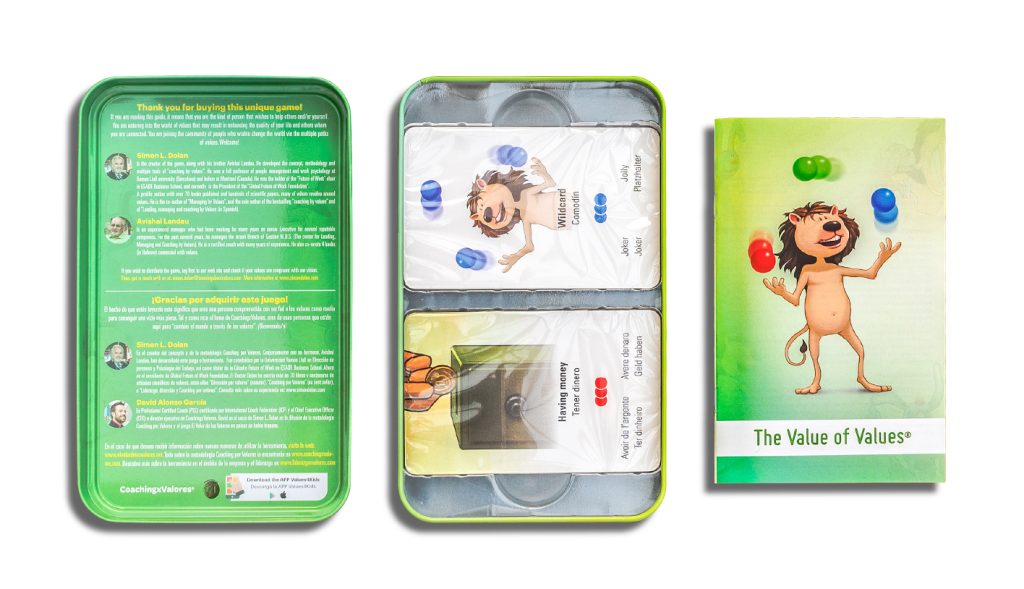Author/s
Simon L. Dolan / David Alonso Garcia
Brief description
Card game based on the Coaching by values methodology. More than a game, it is a ludic resource that allows us to generate different dynamics to reflect on personal values, individually and in groups: which ones do we prioritise, how do we do that..
Recommended ages
From the age of 6 onwards
Participants
1-4 player/s
Components
54 cards (51 value cards + 1 trust card + 3 wild cards)
1 guide with 8 game proposals
Rules
Each of the 51 cards represents a different value. In addition, each value is associated with a different colour, depending on its focus:
Green: more emotion-oriented values
Red: more action-oriented values
Blue: values more oriented towards social participation
At the beginning of the game, each player receives 5 cards and places them face up in front of them on the table. The remaining cards are placed face down in a pile, in the middle of the table.
A player starts and takes a card from the pile. They show it to the other players and must decide if they consider this card and the value it shows to be more important than any of the 5 cards in front of them. If so, they replace it and offer the discarded value to the other players in case anyone is interested. If someone wants it, they do the same and exchange it for one of their 5 values. If no one wants to change, the discarded card is placed on a pile of discarded cards, and the player on the left continues playing. The cards are taken and valued until there are no cards left in the middle pile.
Each time a player has to decide whether or not to keep a card, they must explain the reasons to the other players.
At the end of the game, everyone has the 5 values that they have considered the most important during the game. Each player must rank their values according to the importance they give them and must explain this to the other players.
From this point, work can begin on sharing different aspects of the game and the selected values. Here are a few suggestions:
Evaluate the satisfaction with the fulfilment of each of the 5 selected values, from 1 to 10.
Analyse the orientation of the 5 selected values in terms of colour.
If the game has been carried out in a work team, compare the values with those of the rest of the team members.
This game can also be used or modified to choose the 5 values that define or most represent an organisation. You can even compare your own personal values with those of the organisation.
The set includes a guide that provides up to 8 different variants of the game.
+ information on where to buy it.
www.elvalordelosvalores.net
